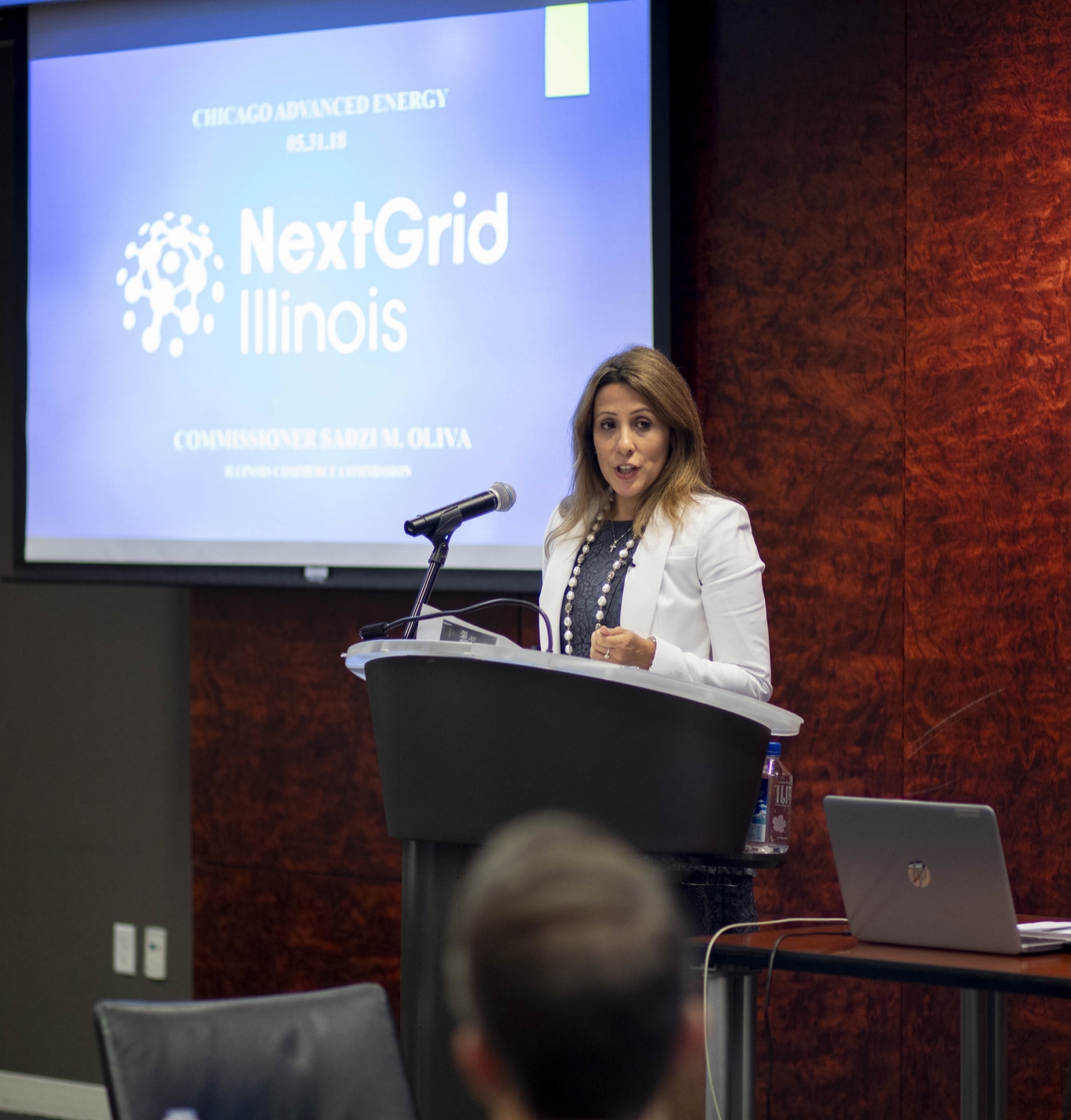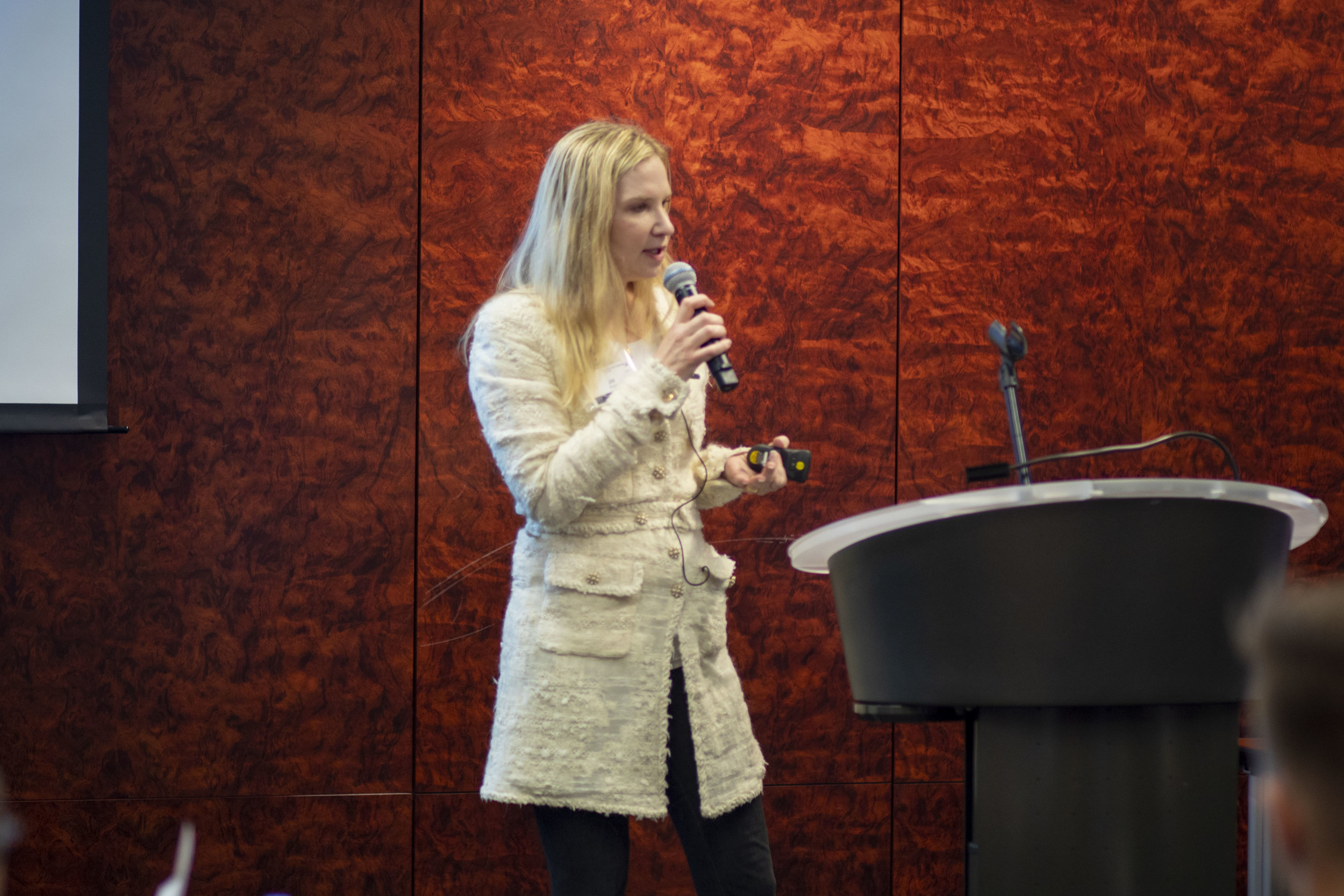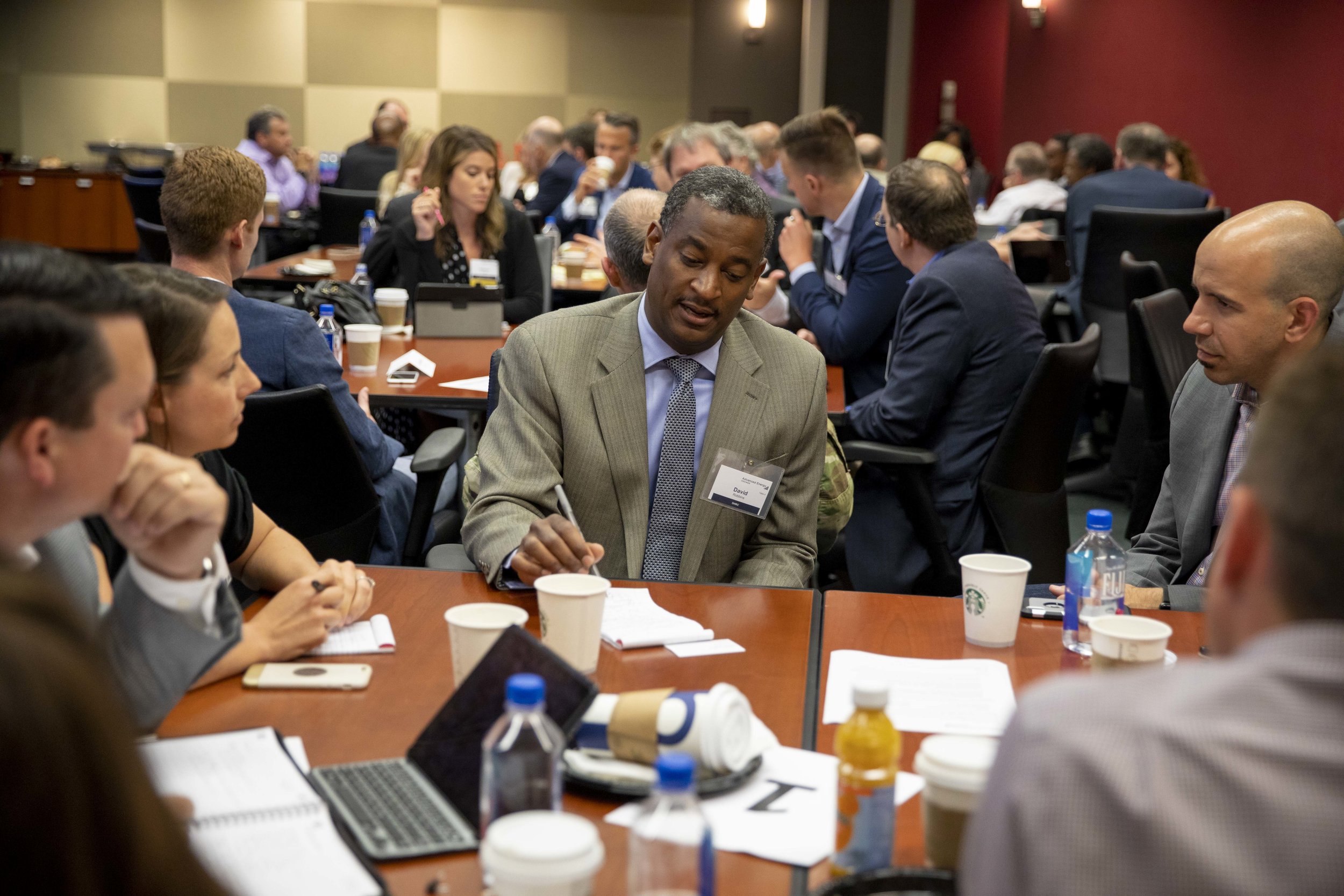- Bridget Hardy, AEG Fellow
On May 31, 2018, Chicago Advanced Energy held its Stakeholder Breakfast on the topic of Smart Buildings and Grid Modernization. Once the room was at capacity and coffee was on the table, H.G. Chissell – CEO of Advanced Energy Group – kicked off the meeting.
The group then heard five presentations from discussion leaders, who offered their takes on smart buildings and grid modernization:
Sadzi Martha Oliva, Commissioner, Illinois Commerce Commission
Steve Humes, Partner, Holland & Knight, LLP
Zhi Zhou, Principal Computational Scientist, Argonne National Laboratory
Kristen Brown, Principal Business Technology Specialist, Utility of the Future, ComEd
Mark Bettin, Vice President, Engineering and Sustainability, TheMART, a Vornado property
Jill Brosig, Senior Vice President, Harrison Street
Kyle Hendricks, Senior Manager, Energy and Sustainability, CBRE
Matt Thibodeau, Vice President, Sargent & Lundy
Commissioner Oliva started her presentation by noting the superb timing of the breakfast in relation to the Future Energy Jobs Act (FEJA, 2017) in Illinois. There is no better time to bring stakeholders together to plan the next phase of grid modernization in Illinois. In addition, the Illinois Commerce Commission is focusing their efforts on their 18-month, consumer focused Utility of the Future Study. Commissioner Oliva described the seven NextGrid Working Groups and two Advisory Councils, stressing the stakeholder focus and involvement in the study. The Commission is on schedule and has an Update and Public Comment Session planned for June 14th, 2018 in Chicago, IL.
Commissioner Oliva, Illinois Commerce Commission
Steve Humes, Partner, Holland & Knight, LLP
Steve Humes of Holland & Knight discussed the fate of zero-emission credits (ZECs) for nuclear power facilities. The Federal Energy Regulatory Commission (FERC) weighed in on ZEC sources in May 2018 and sided with Illinois nuclear subsidies. The U.S. Department of Justice and FERC comments translate to the states' ability to take action on climate change by producing clean energy and reducing carbon emissions without interfering with FERC’s wholesale electricity market jurisdiction. Mr. Humes also briefly discussed the impact of renewable energy programs supported by ratepayer funds in Connecticut, where the state budget diverted Green Bank funds away from these programs in the face of a federal lawsuit.
Zhi Zhou of Argonne National Laboratory explained in detail the evolving electric grid. Today’s central, one-way power system is emerging into “The Energy Cloud.” Distributed, two-way power flows are creating new and intersecting transmission and distribution lines and more dynamic markets. Buildings are underutilized grid assets that, once made smart, will bring further benefits to the grid such as demand response, transmission congestion mitigation, and peak shaving. Some examples of smart building technologies include more responsive heating, ventilation, and air conditioning (HVAC) units, distributed energy resources like solar generation, electric vehicles as battery storage, and available and manageable data. Some foreseeable challenges for smart buildings include building management, markets and incentive mechanisms, and information management (including privacy and cybersecurity problems).
Kristen Brown, Principal Business Technology Specialist, Utility of the Future, ComEd
Kristen Brown from ComEd’s Utility of the Future group discussed how buildings can take actions in response to real-time grid conditions in order to provide value to the grid through avoided costs. These actions include generation and delivery options, including ancillary services like frequency regulation (generation) and distribution voltage control (delivery). These grid services tend to have different technical requirements, markets, and regulations that still need to be ironed out to maximize the utility smart buildings bring the overall grid. Ms. Brown highlighted a two-year study by Southern Company that seeks to test the role of homes and the microgrids to provide grid services. The project, the Alabama Power Smart Neighborhood, uses appliances for demand response needs and ancillary services.
Mark Bettin, Vice President, Engineering and Sustainability, TheMART, a Vornado property
Mark Bettin from TheMART (the Chicago Merchandise Mart), a Vornado building, oversees occupant energy use and potential opportunities for savings. At 99% occupancy with 320 tenants, TheMART is an ideal large scale learning opportunity in energy efficiency. TheMART has an impressive timeline of certification achievements, including LEED EB: O&M Gold Certification in 2013, and Fitwel certification for health behaviors and risk improvement strategies, such as air quality monitoring. The building’s self-financed energy efficiency improvements yielded a 30% reduction in energy use since 2001 and a 20% reduction since 2006. Reductions have slowed in recent years due to the high energy demand of new tenants, even in light of energy efficient upgrades. A frequency regulation battery pilot project has been installed and will begin operating soon to support the greater Chicago area grid and generate revenue in the region’s wholesale energy market.
Jill Brosig, Senior Vice President, Harrison Street
Jill Brosig with Harrison Street gave a presentation on a holistic approach to rating and ranking building performance in today’s electrified world. Harrison Street divided the standards of best building practices into categories—energy, water, waste, transportation, and human experience—and identified stakeholders to develop a holistic standard to rating buildings. As Ms. Brosig said, building performance priorities are derived by overlapping the top four standards from each stakeholder’s perspective. Harrison Street plans to continue working with the Green Building Certification Institute (GBCI) to establish the gold standard in building standards. In addition, Harrison Street assisted with the creation of the highly successful Performance Excellence in Electricity Renewal (PEER) program. The Ameren Microgrid in Champaign, IL, recently received the world’s first utility PEER v2 Gold certification.
At the Microgrid Knowledge Conference 2018, GBCI awarded the Ameren microgrid with PEER Gold certification, the first utility microgrid in the world to achieve such recognition.
Kyle Hendricks with CBRE discussed smart buildings and grid modernization in relation to its corporate client McKesson, a medical equipment distribution company. When defining “smart buildings,” CBRE and their client found they had very different objectives. Through discussion and defining priorities, CBRE was able to create a roadmap for McKesson that will be manageable, achieve client objectives, and addresses future programming and new technologies. CBRE’s assessment of McKesson’s facility found 40% of the space underutilized, approximately 10-15% increase in energy savings, and 100% increase in connectivity.
Matt Thibodeau, Vice President, Sargent & Lundy
Matt Thibodeau with Sargent & Lundy finished the presentation schedule with a discussion on trends in grid modernization. Abundance of low priced natural gas has resulted in approximately 230 gigawatts (GW) of new capacity growth in large scale generation in the last decade. At the same time, the electric grid has more distributed energy resources (DERs) and is becoming digitalized, “smart,” and “modernized.” Illinois, interestingly, is a leader in grid modernization. Examples of grid modernization efforts include: storm hardening; smart switches, meters, and inverters; energy storage; and distribution automation. Grid modernization will lead to less frequent and shorter outages—and as utilities are measured by the frequency and duration of outages, the future looks bright.
Following the presentations, participants at each table discussed the presentations with the objective of delivering a memo to the Illinois Commerce Commission. Each breakout group was tasked with identifying the three strongest actions for CAE to include in the memo that addresses the question:
WHAT ARE THE THREE MOST IMPORTANT STEPS THE ICC CAN TAKE TO ENCOURAGE SMART BUILDING DEVELOPMENT AND GRID MODERNIZATION IN CHICAGO?
After discussing and debating, each table presented their three actionable steps for the ICC to the room to vote on. The group provided sufficient impressive actions for CAE to create and deliver an impactful memo. Notable actions include:
Conduct stakeholder analysis
Educate stakeholders in a targeted way to garner interest
Benchmark buildings statewide and set against actionable goals
Make data available, transparent, and reliable
Design rates and incentives for demand flexibility and resiliency
The third quarter Chicago Advanced Energy Stakeholder Breakfast will be held on October 4th, 2018 and will cover the topic of: IoT, Technology & Innovation. More details can be found here.
Advanced Energy Group is a stakeholder member-supported organization committed to developing and delivering advanced energy policies and solutions in key cities. Stakeholder sessions are by invitation only. For details of our programming please visit:
Event Calendar | Podcasts | Videos | LinkedIn | Twitter










